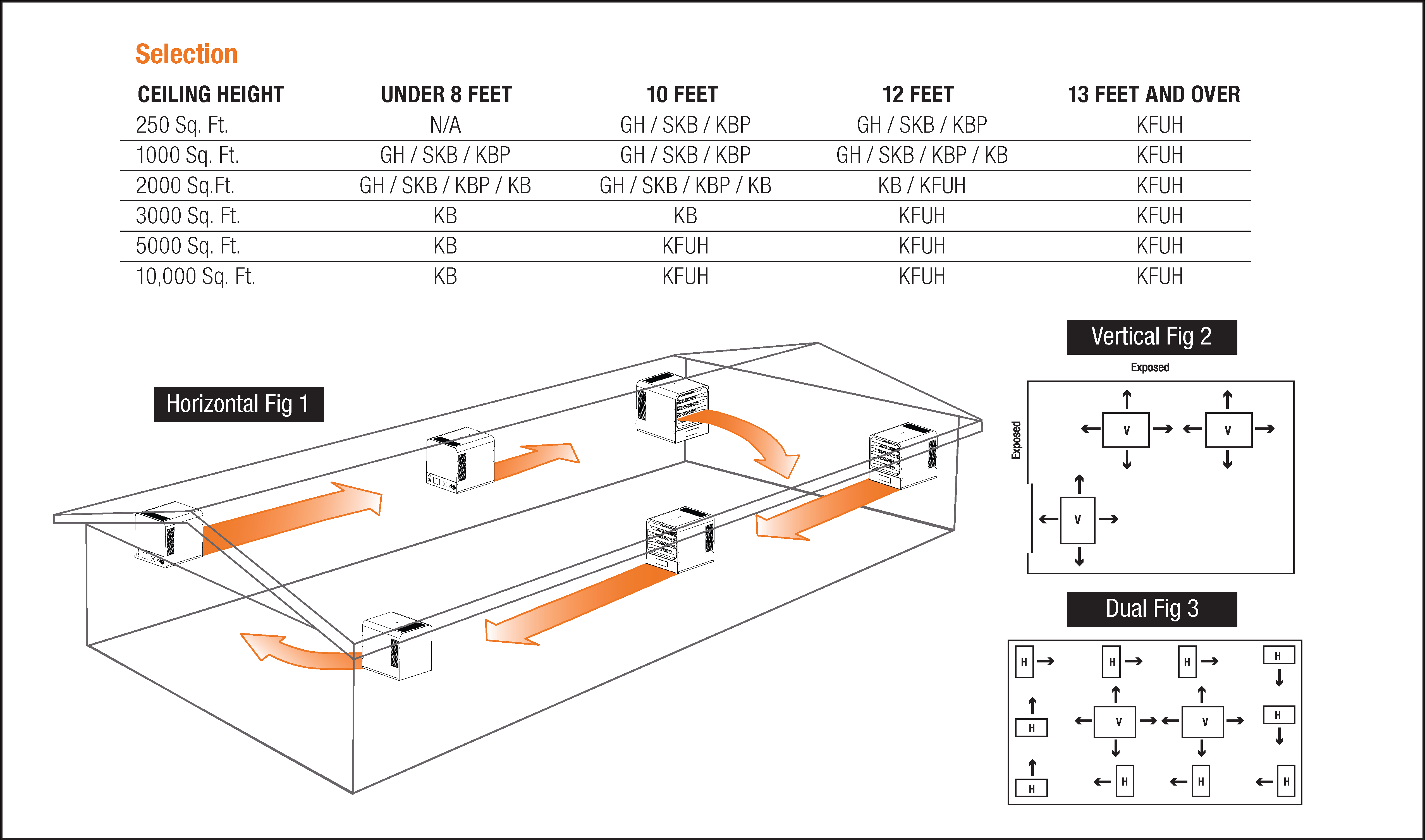To obtain the best performance from King unit heaters use this chart for proper heater selection. To determine which type of unit is best note the ceiling height and room size. In addition to the air throw capabilities of each type of unit heater, wall and ceiling insulation must be considered when determining wattage requirements. The most common error of unit heater selection is installing a unit designed for low ceiling application on a high ceiling. In this application heat is unable to circulate properly to the floor – the result: unsatisfactory comfort or performance level. Following this guide allows correct unit heater selection for the determined space and environment. With correct selection and placement this King unit heater will provide years of high performance heating.
Application Tips
First, calculate heating loads in the conventional way using the N.E.M.A. handbook or ASHRAE guide. Next, determine quantity and size of heaters to be used. In instances where large groups of people are normally settled in the same location use a large number of smaller kW heaters (Example: people on a production line or skilled machine operations). By utilizing heaters in this manner one can best distribute uniform heat, prevent hot drafts, reduce potential noise levels and balance the electrical operating demand. When considering warehouse areas or storage rooms where heat distribution and constant temperatures are less important, use fewer heaters of higher capacity. To maintain uniform heat and reduce stratified air it is recommended that the total CFM of the units turn the air over approximately 3 times per hour.
Horizontal Mount
Smaller rooms can be heated by one unit heater. Where two walls are exposed heaters should be mounted as shown below.In larger rooms, units should be located so air streams wipe exposed walls without blowing at them. Units should be located so the airstream of one supports that of another thus setting up a circulatory air movement. (Distance between units to be approximately 1 times published air throw).Units should not be mounted horizontally in areas having ceiling heights in excess of 10 to 12 feet.
Vertical Mount
Units should be mounted vertically in high bay areas where they may not otherwise interfere with assorted material or handling equipment. Heaters should be situated to provide free air circulation. Size and selection of units should be based on recommended mounting height. Unit heaters are frequently used to combat cold air inrush when loading dock doors are opened. For such applications, one or more units should be arranged to blow warm air vertically in front of opening.
Dual Mounting
Where square footage is large and comfort essential, both horizontal and vertical installations may best serve your requirements.
Mounting Limitations
Unit heaters should not be used in potentially explosive atmospheres. The finish is not intended for direct salt spray exposure in marine applications or the highly corrosive atmospheres of swimming pools, chemical storage bins, etc. Please refer to the factory for explosion proof or marine application heater information.Do not install unit heaters above recommended maximum mounting height. See chart for height information. Obstructions must not block unit heater air inlet or discharge. To prevent possible injury heaters must be mounted at least 6 feet above the floor to prevent accidental contact with heating element or fan blade.
